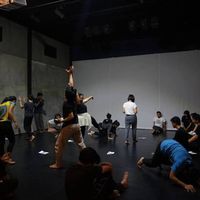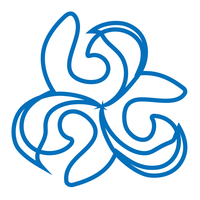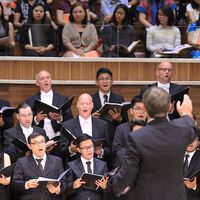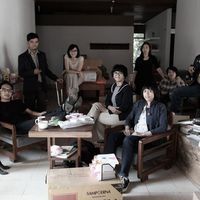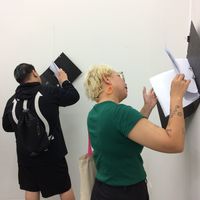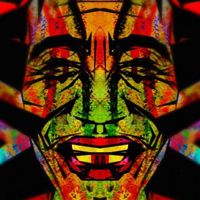By people / In cities: Yogyakarta, Indonesia | city profile

This month, culture360.ASEF.org's contributor David Fernandez travels to Yogyakarta. In this article, he dives into the local arts and cultural scene of the city, exploring some of the alternative creative initiatives that are spurring a very close-knit cultural environment.
Located in the central part of Java island, five hundred kilometers East of Jakarta, Yogyakarta is Indonesia’s artistic and cultural capital and remains a hub for education and tourism.
Recognized for its rich cultural and artistic heritage and traditions, today Yogyakarta is also a city renowned for its artistic community. Besides its traditional Javanese culture and nearby UNESCO World Heritage sites, dozens of independent creative initiatives have been flourishing recently in this historical city.
Yogyakarta is probably one of the most vibrant art cities in Indonesia nowadays. Its dynamism and creative energy can be felt anywhere you look, from classic Javanese culture to contemporary art disciplines. Thanks to both young art school graduates and internationally recognized artists who have continuously contributed to the cultural developments of Yogyakarta as a close-knit community.
- Citra Pratiwi – Curator / Program Director, Langgeng Art Foundation
The city has solidly emerged as one of the region’s most vibrant centers of artistic creation and cultural development. Mainly thanks to the multiple art schools spreading all over town, that have been attracting talent from other parts of the country and nurturing an ideal scenario for the upcoming generations of artists, curators and cultural managers.
Aside from the formal education institutions, much of the energy springs from independent art organizations as well as artist run spaces and interdisciplinary collectives that have been sprouting all over the city in the last decades.
Since we are all individual artists, we decided to join forces in order to share experiences and support each other collectively. After the art boom that Yogyakarta went through at the end of last decade, it’s interesting to see how the younger generation of artists and creatives articulate the current socio-political issues, the main trigger for us to keep creating art in order to contribute to the society.
- Gintani Nur Apresia Swastika - Artist – Curator, Member of Ace House
Many of them function also as informal art education platforms, encouraging knowledge sharing and collaboration, demonstrating great attention in keeping different disciplines in conversation with one another, promoting critical dialogue.
‘Local creative communities are what makes this city "alive". Through its varied art and cultural groups, Yogyakarta provides opportunities for young people to develop and add insights according to what they like to explore. With its many art and cultural activities and festivals, this city constantly provides a chance for young people to take part, learn new things and express themselves’.
- Uniph Kahfi – Program Coordinator, Kedai Kebun Forum
The city’s most established independent art institution, Cemeti - Institute for Art and Society, has served as an inspiration for many. Now in its 31st year – the oldest in Indonesia of its kind – its activity program continues to stimulate art practices, art discourse and art management.
Initiated by artists Mella Jaarsma and Nindityo Adipurnomo, this interdisciplinary platform for contemporary art has been tirelessly hosting artist in residence as well as regular exhibitions, performances, talks, workshops and symposiums.
‘Yogyakarta hosts multiple art scenes. It’s hard to describe it as a whole since there are many art communities operating in the city simultaneously, but certainly one of the things that defines the nature of these various communities is the fact that they are often self-initiated and self-supporting. Another one is the lack of state funding, therefore many of these initiatives reply on friendship and community support.’
- Sanne Oorthuizen and Alec Steadman, Co-Chief Curators - Cemeti Institute for Art and Society
Another great example of collectivity and self-organization, a common norm in Yogyakarta, is Ruang MES 56 collective and art space. This non-profit art organization has been one of the most prolific in promoting all types of art and cultural expressions, particularly anything related to new media, from design to photography, video art and experimental music.
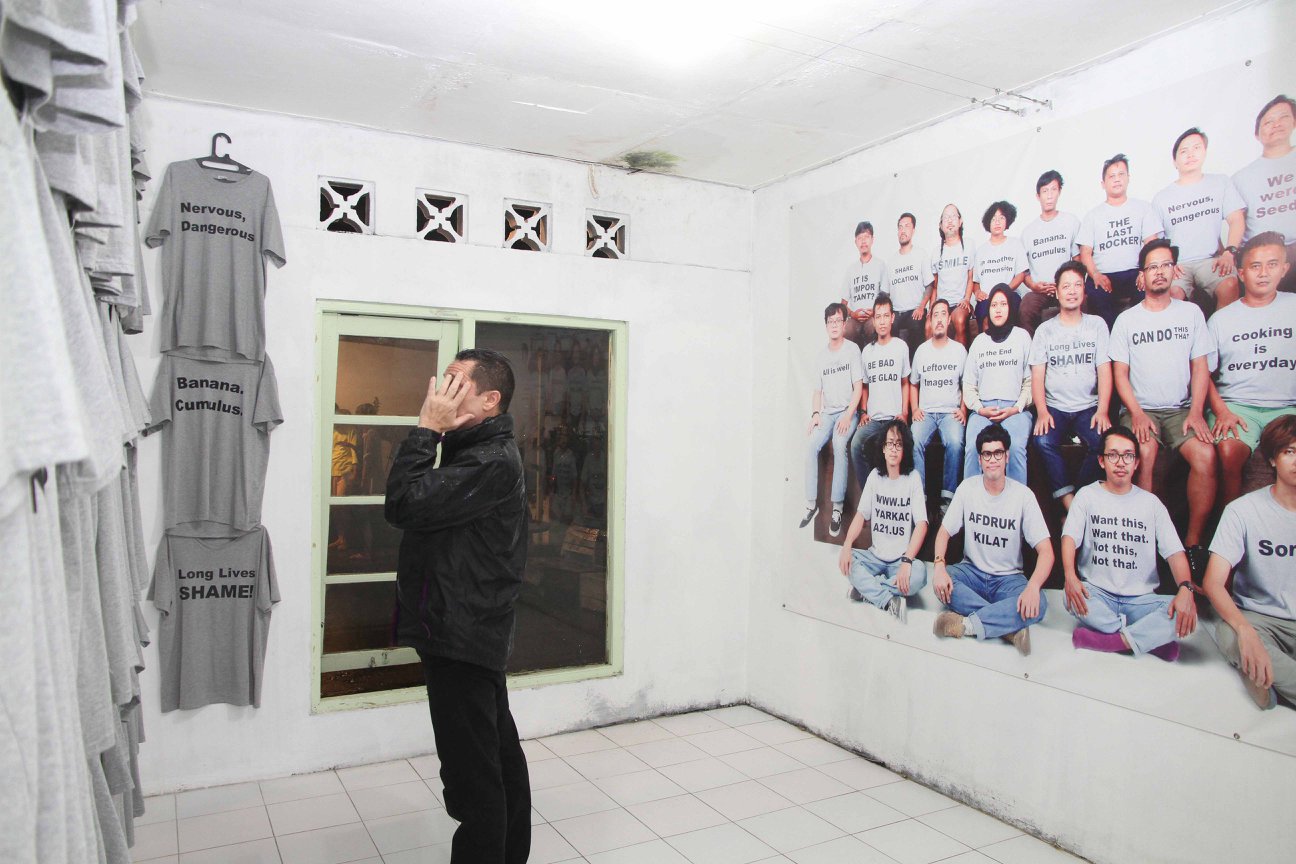
Ruang MES 56
At the same time, this art group has been playing a particularly important role in engaging with other collectives in order to strengthen collaboration and foster better cultural networks.
Other key players that followed the creative path are Ace House, Kedai Kebun Forum, and Lir Space – just to name a few – all of them have also been very active in recent years, curating and promoting contemporary art programs of a diverse range of media while serving as curated platforms for younger generations.
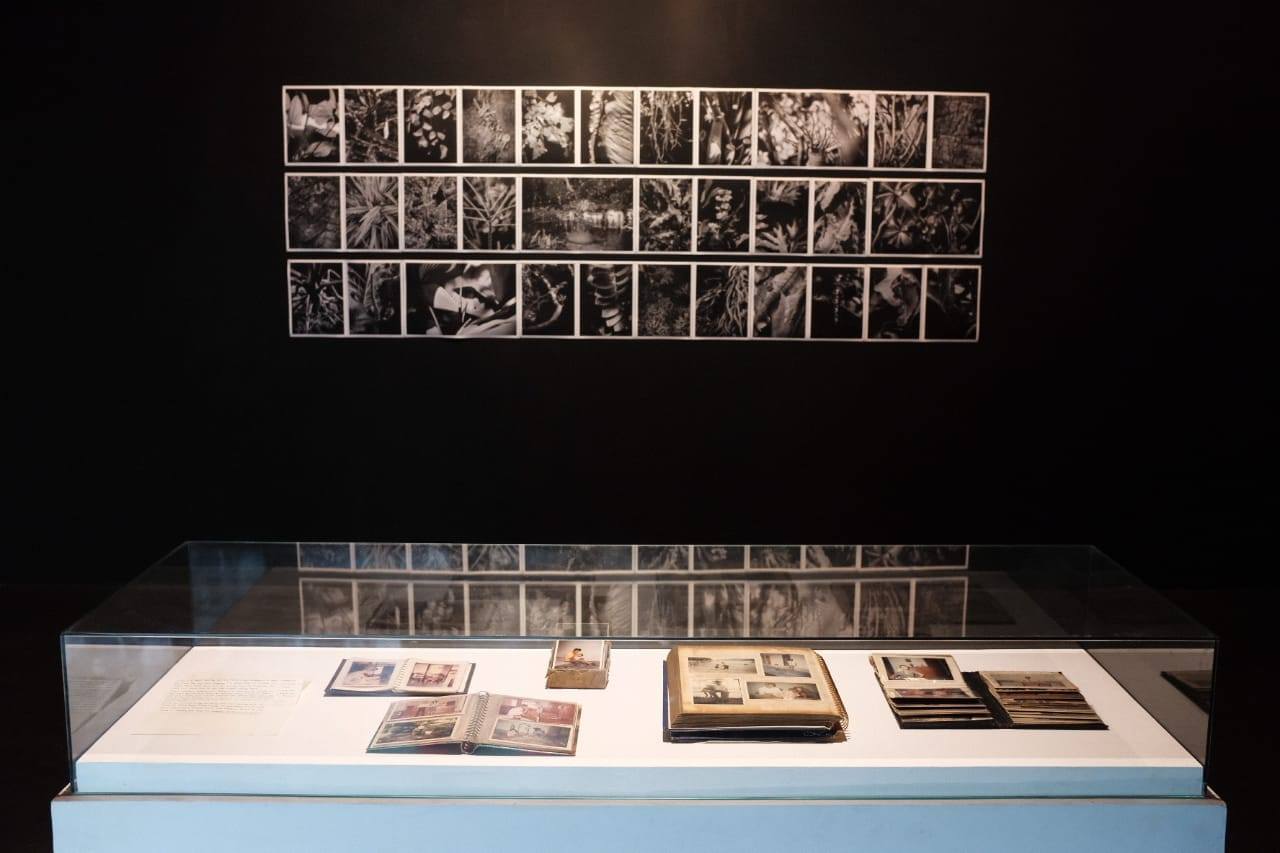
Kedai Kebun Forum
More recent additions to the scene are Langgeng Art Foundation, SaRanG, Redbase Foundation and Galerie Lorong, whose area of interest is also in bringing attention to new emerging visual artists through exhibitions and art residencies while helping them to shape their careers and bringing them further by promoting and guiding them during their creative processes.
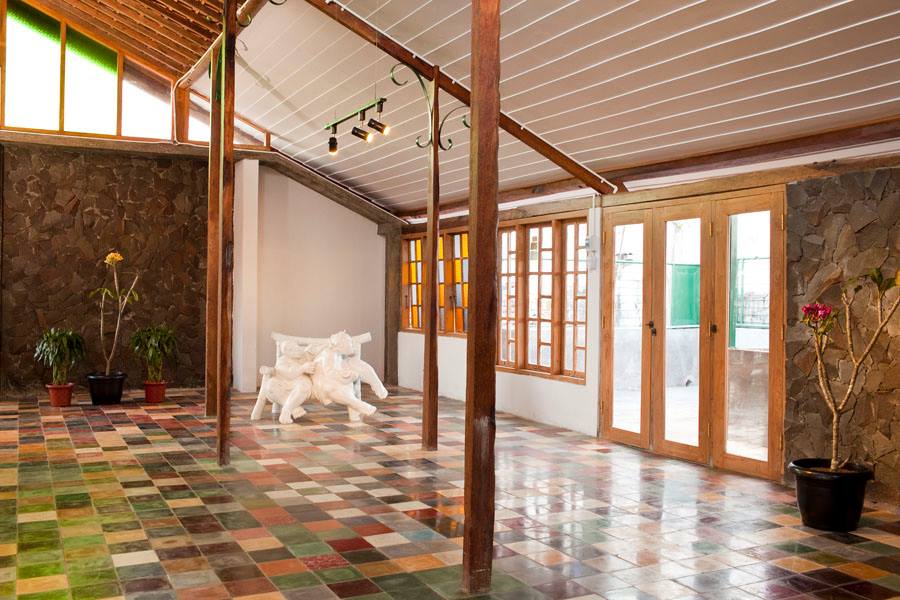
Galerie Lorong
‘The city truly feels like a hub now. For those looking for an alternative art scene in Indonesia, Yogyakarta is probably one of the best places to experience how collectivity has contributed to a more vibrant environment in the arts. A medium-sized city filled with self-financed collectives operating differently through various organizational forms and relationships with community. Ultimately, in Yogyakarta, the friendship is the currency.’
- Mira Asriningtyas and Dito Yuwono – Co-Curators, Lir Space
Not all of what’s happening in the creative arena is reserved for visual artists. In fact, there are also initiatives focusing specifically in other disciplines aside from visual arts such as performing arts, an art form with great tradition in Yogyakarta.
Probably the best-known is Teater Garasi, a multi-disciplinary performance group that produces knowledge with the objective of dialectically involving the social political environment. With a similar goal in mind, they founded Garasi Performance Institute, a sister platform of the collective, whose aim is to create and encourage a sustainable creative environment for performing artists in Indonesia and Asia.
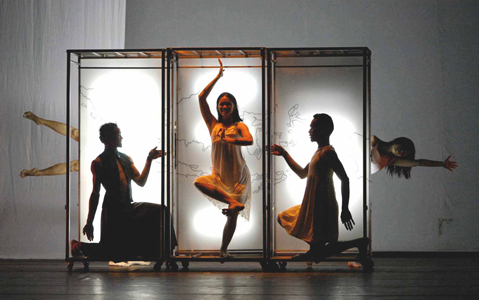
Teater Garasi
Aside from contemporary art initiatives, there’s also other cultural cross-disciplinary organizations delving into the creative sustainable field that are worth mentioning, including Kunci Cultural Studies Center, a research group that has been making the effort to develop cultural studies with a spirit of experimentation and to advance its critical approach into a wider movement through popular education practices.
Also, very interesting is the creative interdisciplinary approach of Lifepatch, the citizen-based organization focusing on art, science and technology that direct its joint efforts to build bridges of domestic and international collaboration. This community provides to anyone open access to development research.
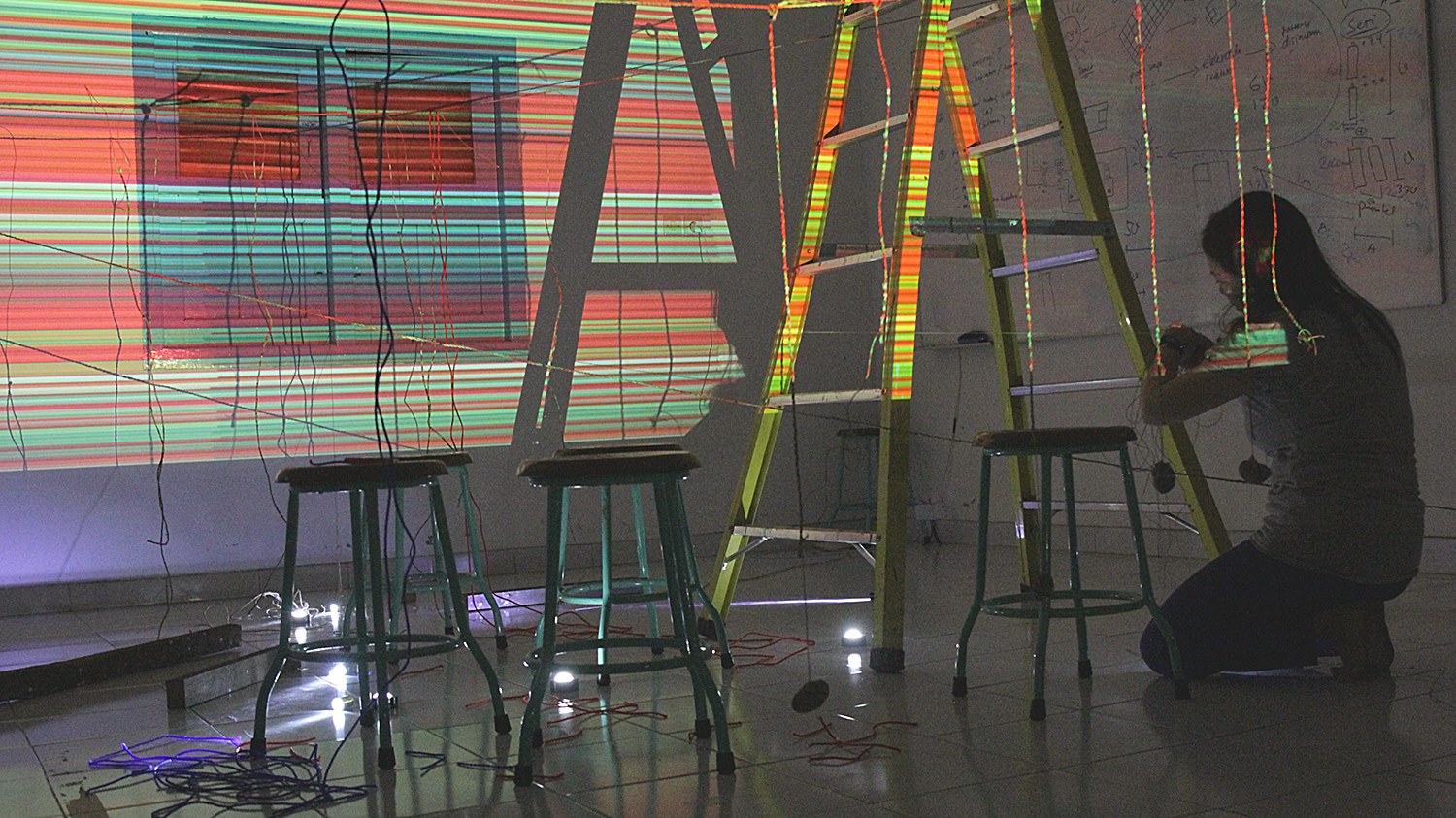
Lifepatch
Notably, many of the above-mentioned cross-disciplinary platforms have addressed the importance of looking beyond and exploring sustainable creative practices, a trend that seems to be picking up steam lately, not only in Yogyakarta but also elsewhere in Indonesia.
In addition, regular contemporary art events have been taking place in the city, providing extra platforms to showcase young talent production at the same time the city keeps gaining exposure as an art destination.
Among others Biennale Jogja, founded back in 1988, has contributed significantly to the dynamic of local and regional art scene in Indonesia and Southeast Asia particularly. More local in scope is Yogyakarta Open Studio, an annual art activity where Yogyakarta-based artists are invited to open their studios to the public while examining a specific theme.
Finally, it is also worth mentioning one of the main events of the year, ArtJog, a commercial art fair that supports artists over galleries. With the aim of promoting Indonesian contemporary art diversity to the global audience, it takes place annually at Jogja National Museum, an enclave turned into a place for all kinds of art and cultural activities including art exhibitions, music performances, among others.
However, although the level of dynamism brought to the city by all these art spaces and cultural initiatives is undeniably outstanding, there is an evident lack of cultural infrastructure in Yogyakarta.
Still, the committed art community is proactively finding its own alternative ways to fill the gaps and develop their programs mostly through collectivism and grassroots networks, while keeping the creative momentum going full steam forward.
‘Apart from good cultural infrastructure, one of the biggest challenges Yogyakarta is facing nowadays is the fact that the local art community lacks an association that can accommodate all the different perspectives and represent the interests of all the independent art collectives, especially when dealing with official interlocutors. Most of the collectives in the city are self-funded, so most of the cultural activity in the city happens in a very organic and self-organized way, unlike Jakarta where they usually enjoy more public funding, foreign cultural institutions and even sponsorships from private companies. Therefore, we need to keep working towards strengthening the local network, maximizing collaborative opportunities, exchanging resources and, eventually, distributing the arts and cultural knowledge among the public.’
- Woto Wibowo - Ruang Mes 56
David Fernández is a Spanish-born contributing writer working in South East Asia. Currently working as freelance arts & cultural project manager and digital media consultant around the region, he is also one of the co-founders of Cho Why multi-disciplinary project space in Bangkok, Thailand. He previously co-founded Le Cool Bangkok arts & culture webzine and worked as content director.
Similar content
posted on
05 Jul 2011
17 Sep 2018
posted on
08 Jun 2016

